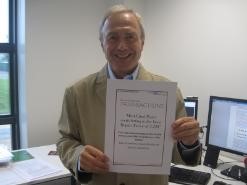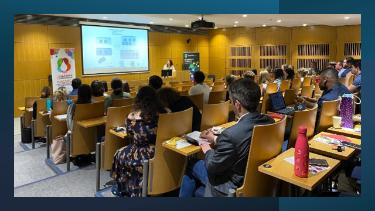New publications
One Hippo and many masters: differential regulation of the Hippo pathway in cancer.
Romano D, Matallanas D, Frederick DT, Flaherty KT, Kolch W.
Biochem Soc Trans. 2014 Aug 1;42(4):816-21. doi: 10.1042/BST20140030.
Why read this paper? This review summarises the Kolch and Matallanas group’s research on the pro-apoptotic signal mediated by the MST2/Hippo over the last decade.
Molecular mechanisms of asymmetric RAF dimer activation.
Jambrina PG, Bohuszewicz O, Buchete NV, Kolch W, Rosta E.
Biochem Soc Trans. 2014 Aug 1;42(4):784-90. doi: 10.1042/BST20140025.
Why read this paper? This review by Edina Rosta’s group at King’s College London in collaboration with scientists at UCD discusses how molecular dynamics (MD) simulations can be used to model conformational transitions of RAF kinase dimers. These long-time MD simulations can provide unique insights into atomistically detailed structural data of experimentally difficult to observe conformational changes that govern the activation processes.
Robustness and evolvability of the human signaling network.
Kim J, Vandamme D, Kim JR, Munoz AG, Kolch W, Cho KH.
PLoS Comput Biol. 2014 Jul 31;10(7):e1003763. doi: 10.1371/journal.pcbi.1003763. eCollection 2014 Jul.
Why read this paper? This paper by Kwang-Hyun Cho’s group in South Korea in collaboration with scientists from SBI deals with the question of how biological systems can be robust and at the same time allow for evolution of internal mutations and external environmental changes, focusing on the human signaling network and defining the evolutionary design principles and their implication for the identification of novel drug targets.
Nonlinear signalling networks and cell-to-cell variability transform external signals into broadly distributed or bimodal responses.
Dobrzynski M, Nguyen LK, Birtwistle MR, von Kriegsheim A, Blanco Fernández A, Cheong A, Kolch W, Kholodenko BN. J R Soc Interface. 2014 Sep 6;11(98):20140383. doi: 10.1098/rsif.2014.0383.
Why read this paper? This paper demonstrates how differences in the drug dose response between individual cells affect the overall response on the population level, and how this response can be synchronised. It may be of interest to those studying cell-to-cell variability as well as synthetic biologists designing dose response characteristics.
 |
SBI Deputy Director Boris Kholodenko’s paper ‘Cross-talk between mitogenic Ras/MAPK and survival PI3K/Akt pathways: a fine balance’ was Biochemistry Society Transactions most cited paper of 2013. |
|---|
Competing to coordinate cell fate decisions: the MST2-Raf-1 signaling device.
Nguyen LK,Matallanas D, Romano D, Kholodenko BN, and Kolch W.
Cell Cycle.
Why read this paper? This paper presents an in-depth perspective on how completely opposing biological decisions (cell growth and death) can be achieved by the same molecular apparatus: the integrated MST2-Raf-1 signalling network. It sheds light on the general question of how biochemical signalling pathways generate biological specificity and demonstrates how mathematical modeling can be a great aid in this quest.
Ubiquitin chain specific auto-ubiquitination triggers sustained oscillation, bistable switches and excitable firing.
Nguyen LK,Zhao Q, Varusai TM, Kholodenko BN.
IET Systems Biology.
Why read this paper? This original research paper unveils the rich and versatile dynamical properties of ubiquitin signalling systems that are regulated by self-catalysed ubiqitination, a common regulatory motif occurring in cells.

